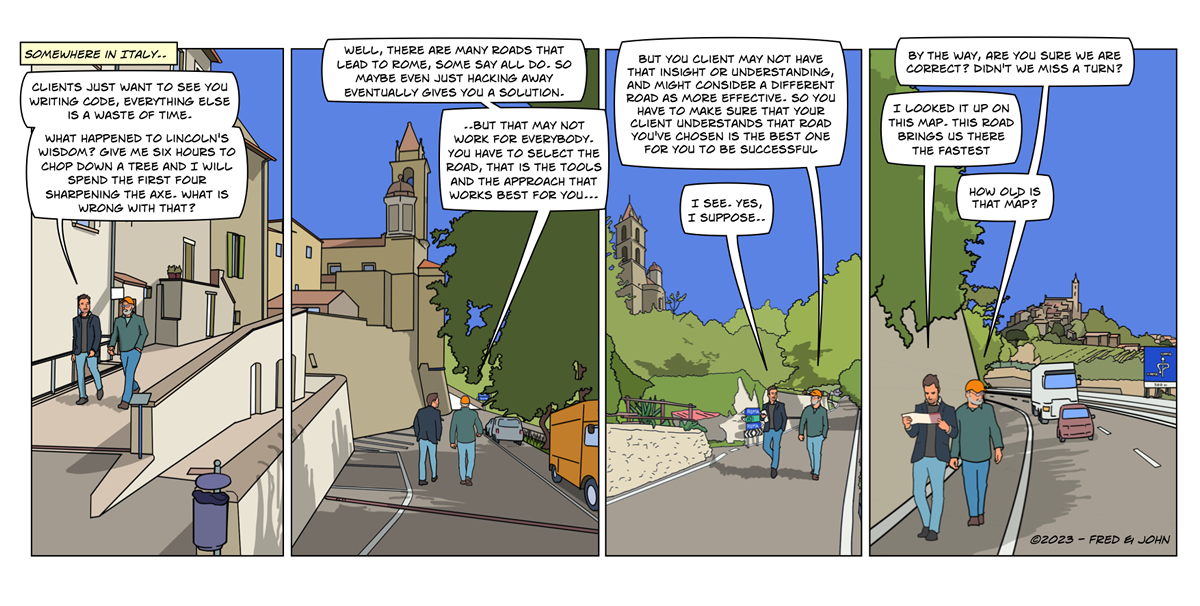Who hasn't snipped out a cartoon from Dilbert or some other source that captures a meaningful experience that they want to share with others. Cartoons seem to be an unusually effective way for communicating ideas. I have been fortunate to work with Fred Voorhorst for many years. Fred has been able to convert many of my obtuse thoughts into cartoons that clarify and expand these thoughts in interesting ways. Here are a sample of some recent cartoons. Many more cartoons can be found in our book "A Meaning Processing Approach to Cognition: What Matters."
 Systems thinking involves applying various models to represent complex interactions, but general systems theorists also warn us not to forget that the models are creations of the observers and that we should not reify our models as independent properties (e.g., mechanisms) of nature. Every model reveals some aspects of nature at the expense of hiding other aspects.
Systems thinking involves applying various models to represent complex interactions, but general systems theorists also warn us not to forget that the models are creations of the observers and that we should not reify our models as independent properties (e.g., mechanisms) of nature. Every model reveals some aspects of nature at the expense of hiding other aspects.

"You can't step in the same river twice," said Heraclitus. And borrowing an analogy from William James - many of our system models are like buckets of water from the river. We need to be careful not to mistake the water in our buckets for the constantly changing river.
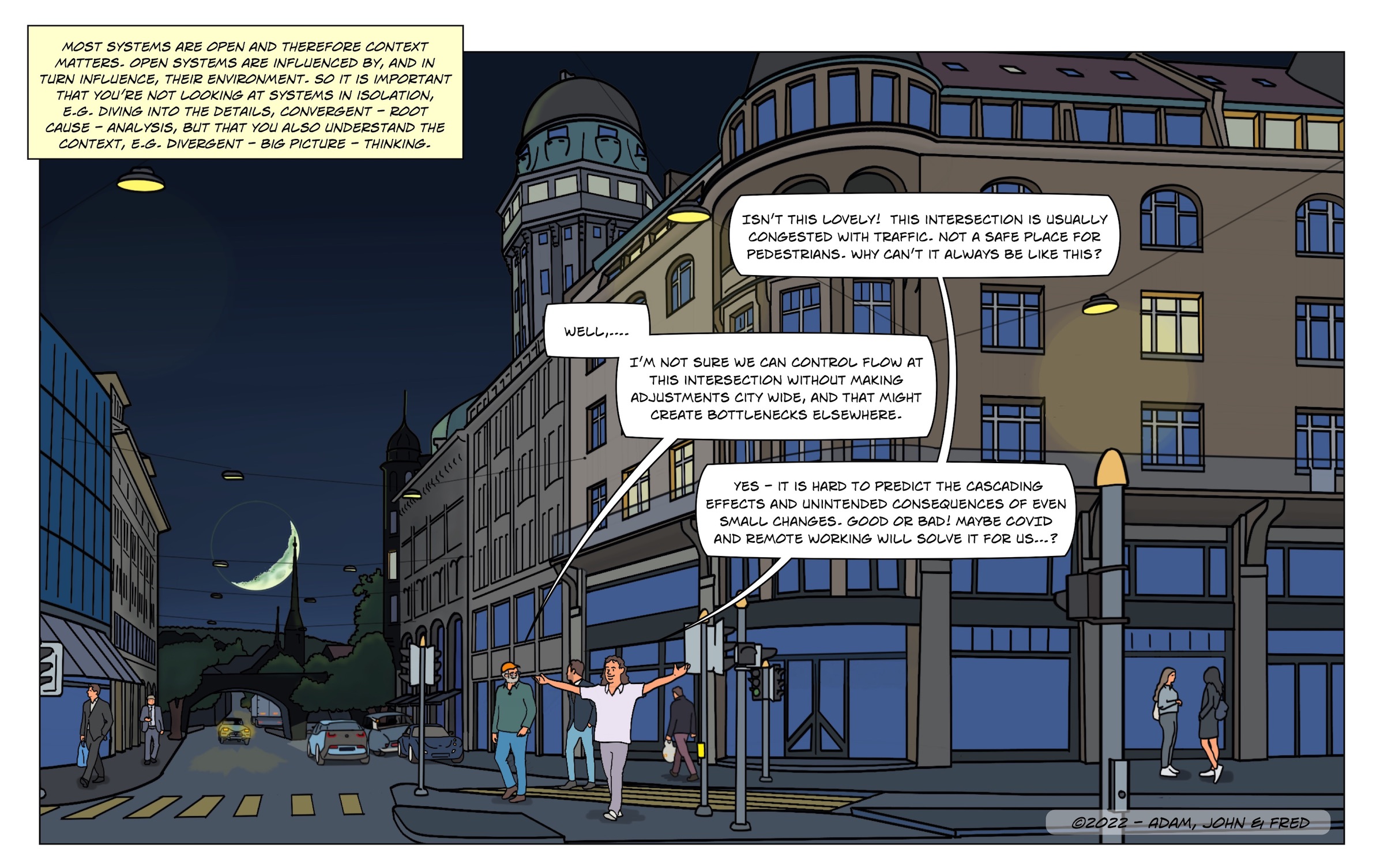
Systems theorists make the distinction between closed and open systems. However, I think the idea of a closed-system is a fiction for all intents and purposes. It is a construction for the convenience of experimental scientists that is never realized outside of the laboratory.

Nature is a web - where everything is connected to everything else. A change in one part of a system has consequences for other parts of the system. So, plans often have to be adapted in response to the consequences of unexpected changes. Thus, survival often depends on the ability to adapt or re-plan. In many respects, everyday human rationality (e.g., common sense) is the capacity to muddle skillfully in response to the requisite variety generated by the web of nature.
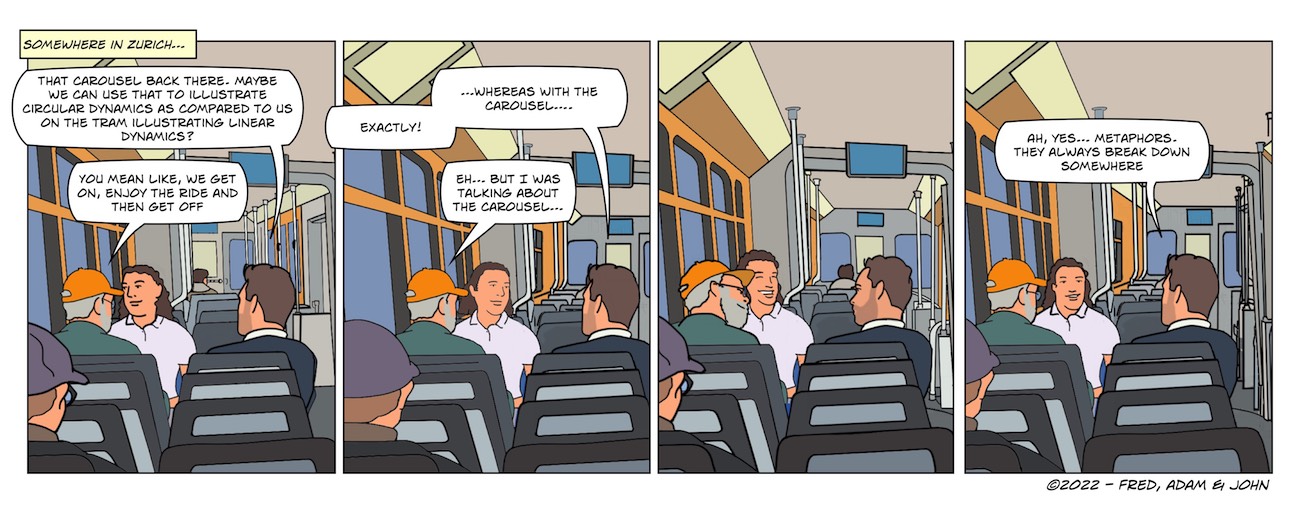
The dynamics of causal models tend to be based on an arrow of time moving like a train from one station to the next. An alternative view emphasizes the cyclical flow in which actions feedback to shape and be shaped by their consequences, such that the path emerges from the coupling of actor and ecology (like a drip of water rolling off your hand). Is the flow of life more like a carousel or a train? Or neither? Or both?
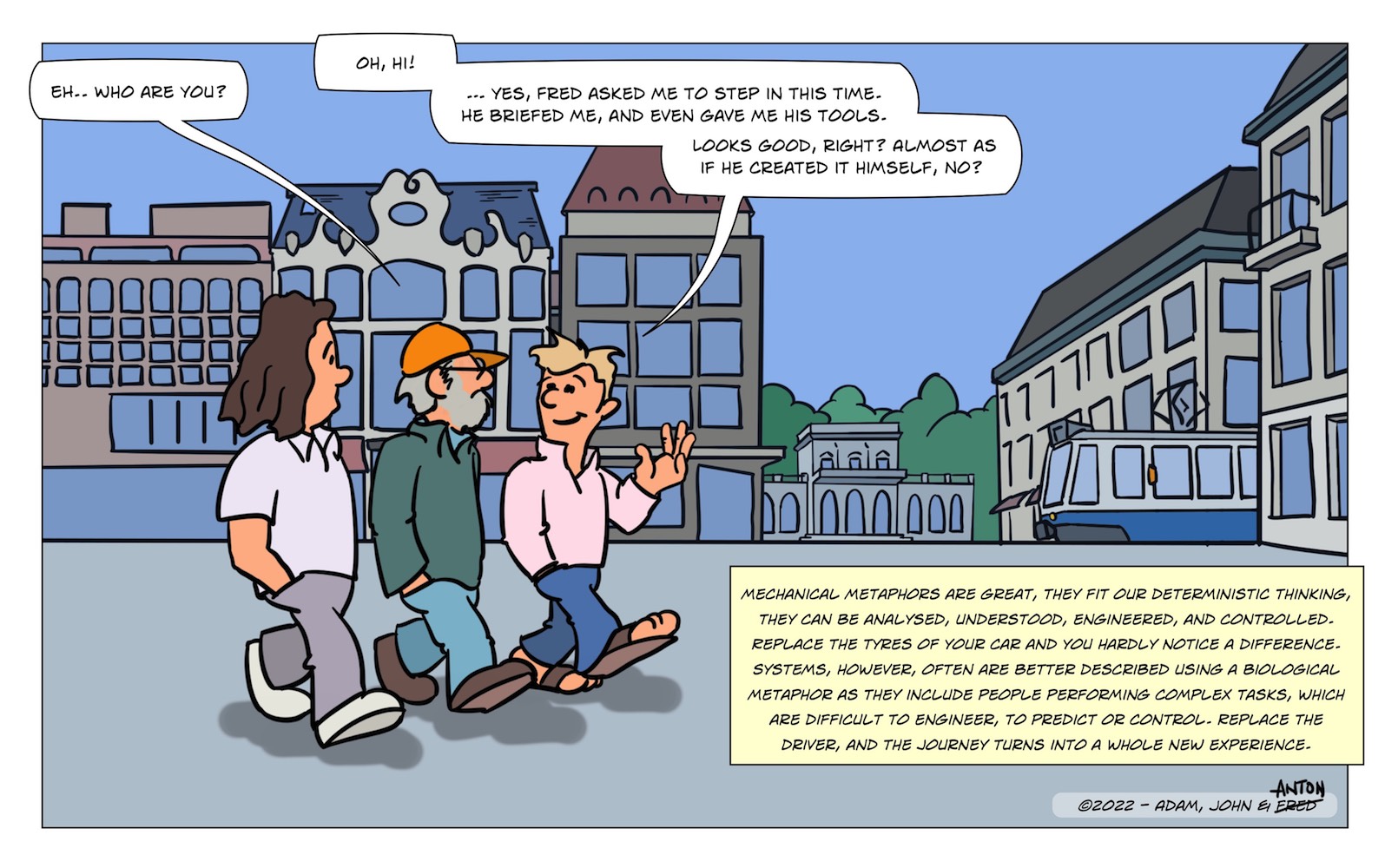
Institutions sometimes treat people as if they are just bricks in a wall. The unique skills and contributions of individuals may not be appreciated until they are gone.
I'm not sure who this Anton imposter is - but he is a poor substitute for Fred Voorhorst, who created the prior images. Hopefully, Fred will be back for the next post!
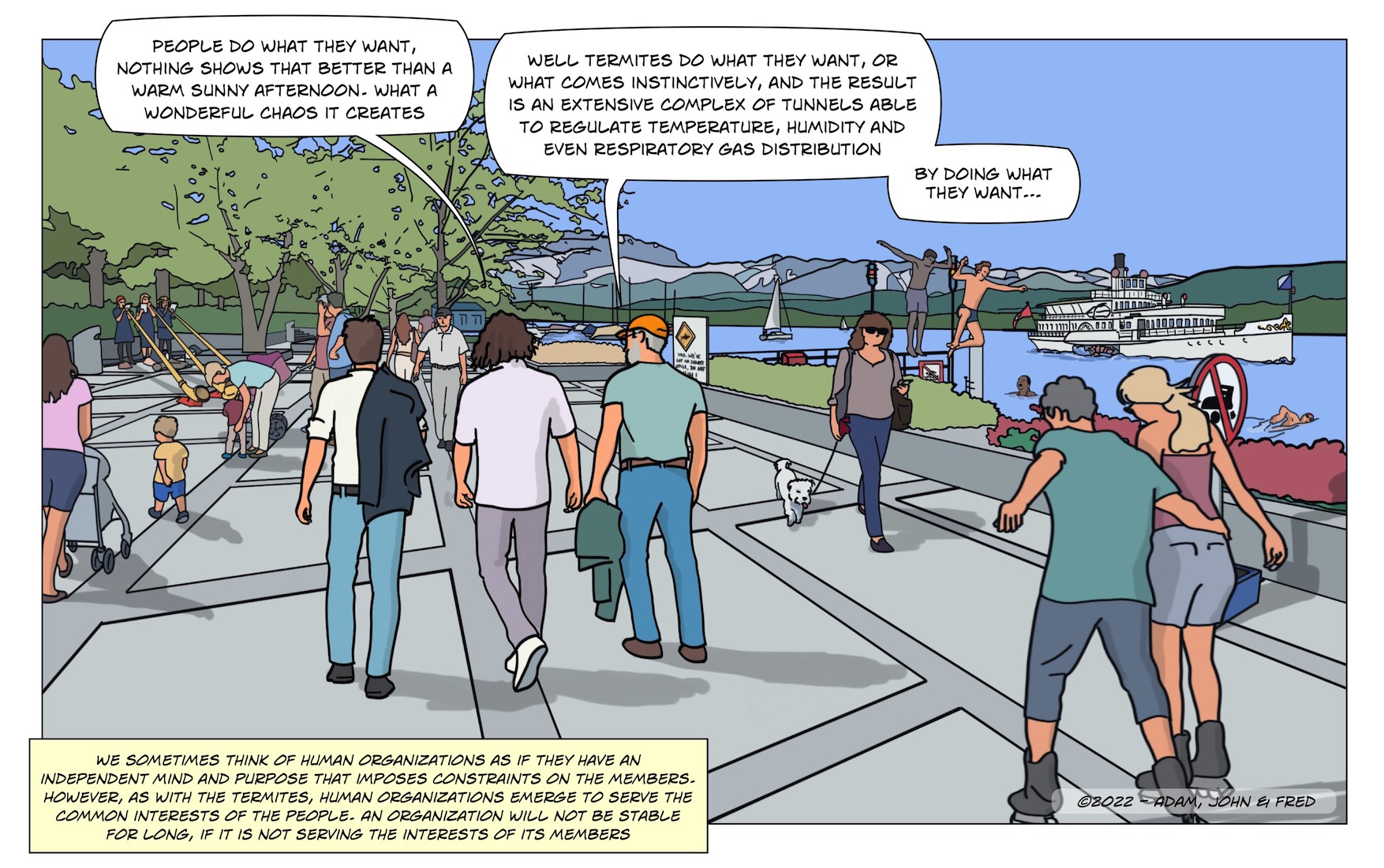
"Serving the interests of members" can mean many things. It may reflect shared intrinsic values or goals (e.g., liberty, peace or justice); or it might be associated with extrinsic rewards (e.g., high salaries, or prestigious titles); or it might be extrinsic threats (e.g., avoiding punishment or other negative consequences). Are some ways of serving member's interests more intrinsically stable than others? Do some ways require much more energy/effort to maintain stability? Are some ways intrinsically unstable such that they will inevitably collapse?
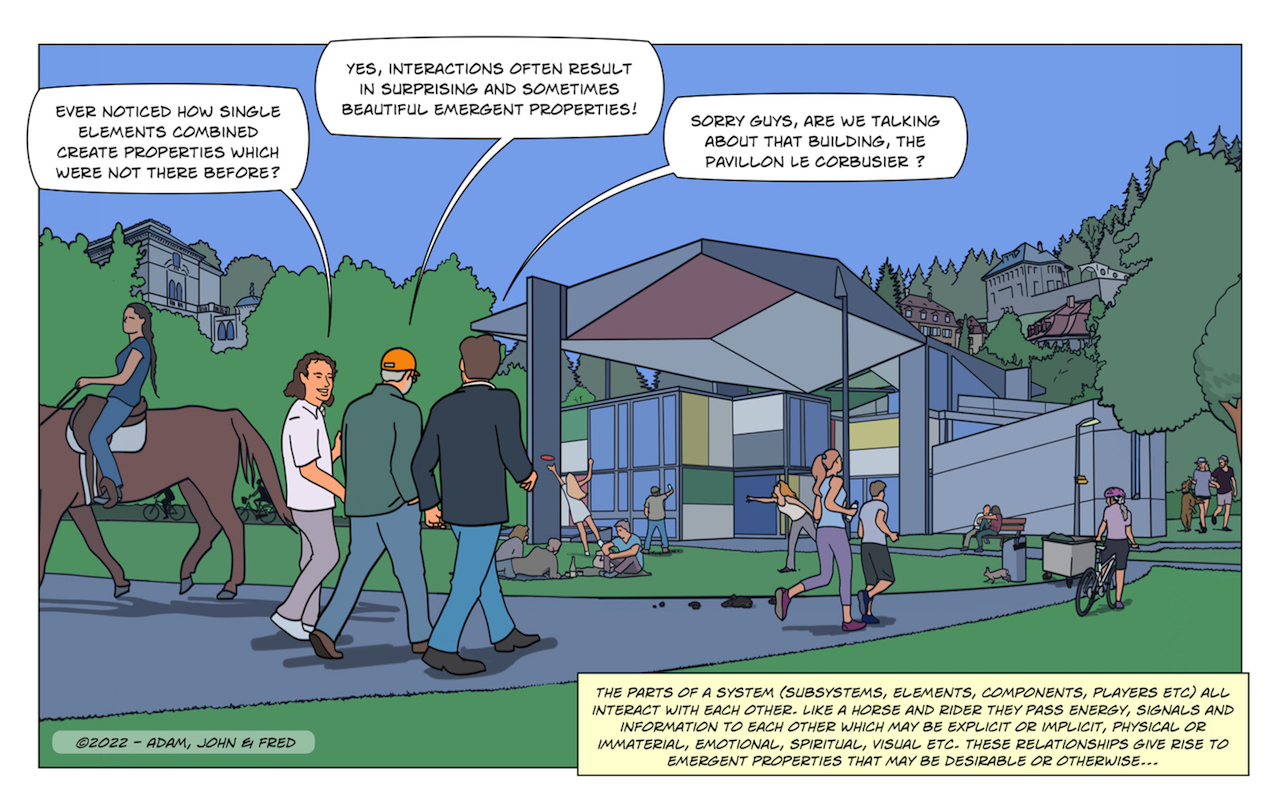
It modeling a "system" we often start by enumerating the "things." But to model "experience" the relations are more significant than the things: "riding a horse" "organizing a picnic" "playing frisbee" "jogging with a friend" "riding a bike" "having a conversation" "touring a building" are dynamic experiences that flow from the interactions (e.g., functional relations, social relations) among the things. For experience - the fields of flow typically matter more than the particular agents. Just as a body can maintain the same function -even as all the cells are constantly being replaced by new ones.
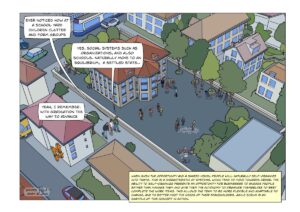
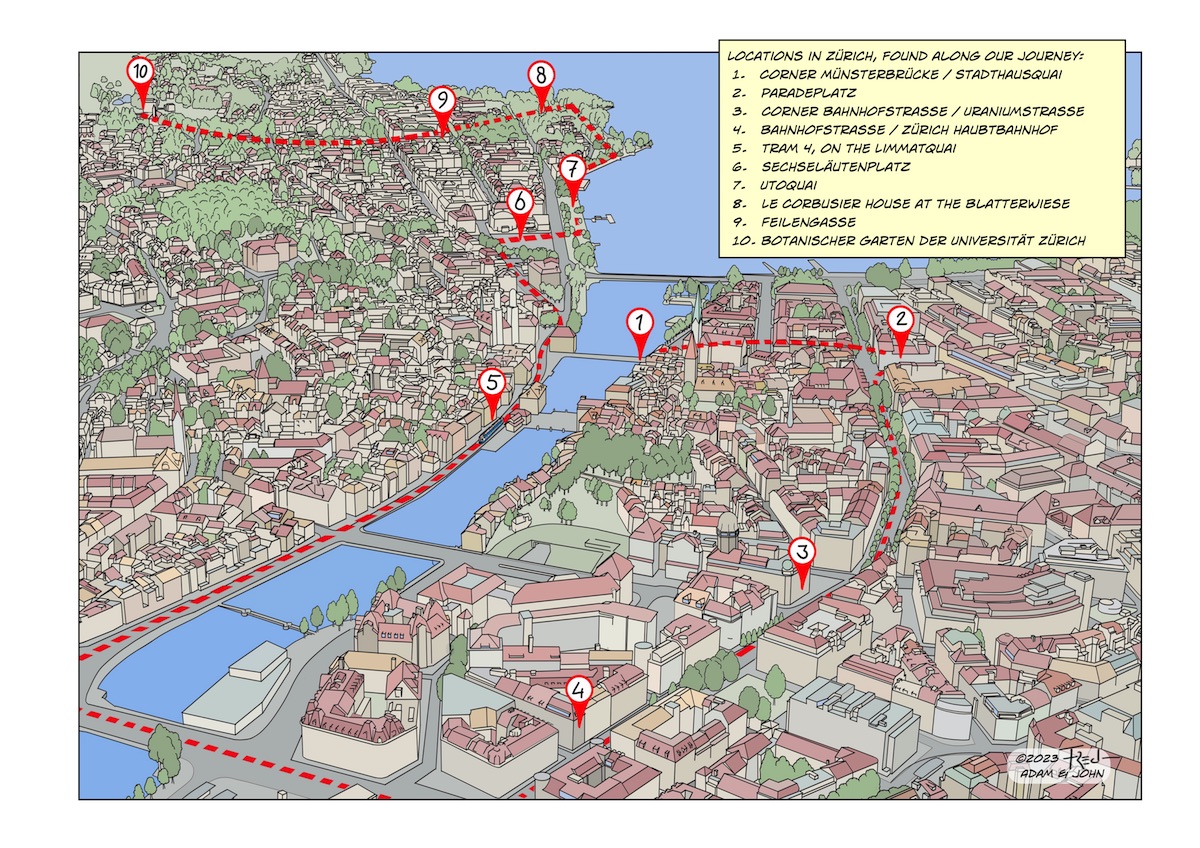

Hindsight often leads to plausible causal narratives to explain known outcomes. However, these narratives typically trivialize many of the complexities associated with the actual experience of living forward. If we shift the goal of historical analysis from looking for causes (reductive) to simulating situations (reproductive), we may be in a better position to empathize with historical figures, to appreciate the challenges faced, and to learn lessons that will prepare us to address similar challenges in the future. Since we have to live forward - we should try to avoid backward thinking.

A trip can be broken down into segments, but a dynamic system cannot be decomposed into a sequence of 'causes' without losing insight into the emergent properties intrinsic to circles - such as stability. In human experience, perception and action are intimately coupled and thus can only be fully understood in the context of that coupling.

Domains of experience can be described in terms of multiple levels of functional constraints/relations. However, the descriptions that scientific observers use to describe the experiences are not necessarily isomorphic to the experience itself. William James called this tendency to put the observations of the scientific observer into the mind of the human being observed the "Psychologist's Fallacy."
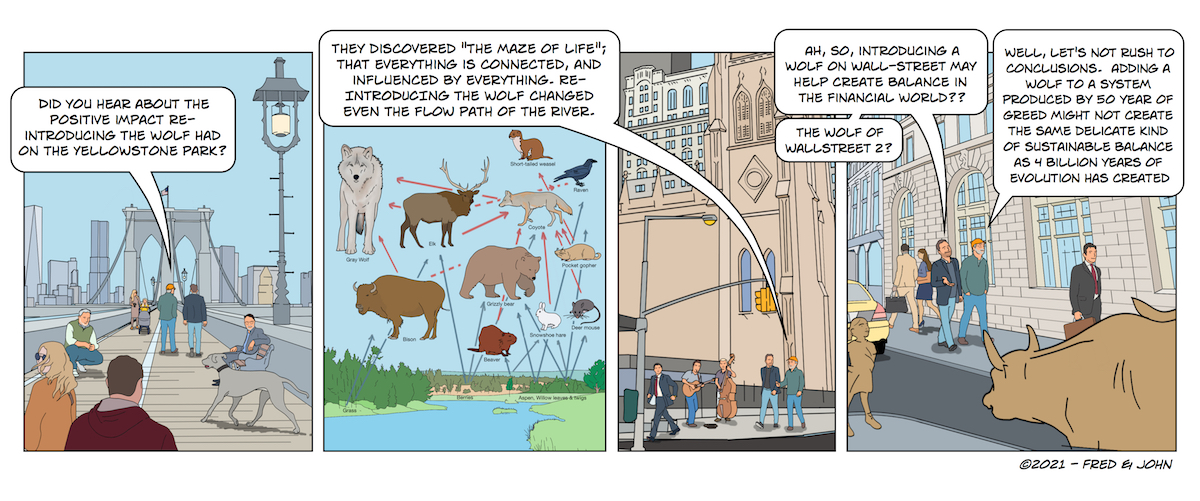
The stability of complex systems can not be attributed to any single element of the system. While the wolf might be a stabilizing influence in Yellowstone, it may be a source of instability on Wall Street. This illustrates the contrast between a wilderness ecology and a human economy. It also illustrates the difference between the wisdom of mother nature and the foolishness of greed.

A collection of super stars does not always make the best team. Expertise is valuable, but not if it can't play well with others. A team that doesn't work together, can only be as smart as a single expert - but a team, that works together well, can be much smarter than any of the individual members.

Scientists have utilized physical objects and logical puzzles to probe the nature of human experience; and have interpreted variations or deviations from classical metrics or prescriptions as illusions, errors, or biases. The metrics of physics and the prescriptions of logic are typically taken as the standards of truth or reality. In essence, this program of research denies the 'reality' of human experience. A mature science of human experience must discover the intrinsic dimensions of the phenomenon, rather than impose a dimensionality that is most convenient for describing the probes we use. For example, reachable may be more real in terms of experience, than x kilometers. And further reachable may have different values depending on whether we are talking about picking up a glass of beer or landing an aircraft.
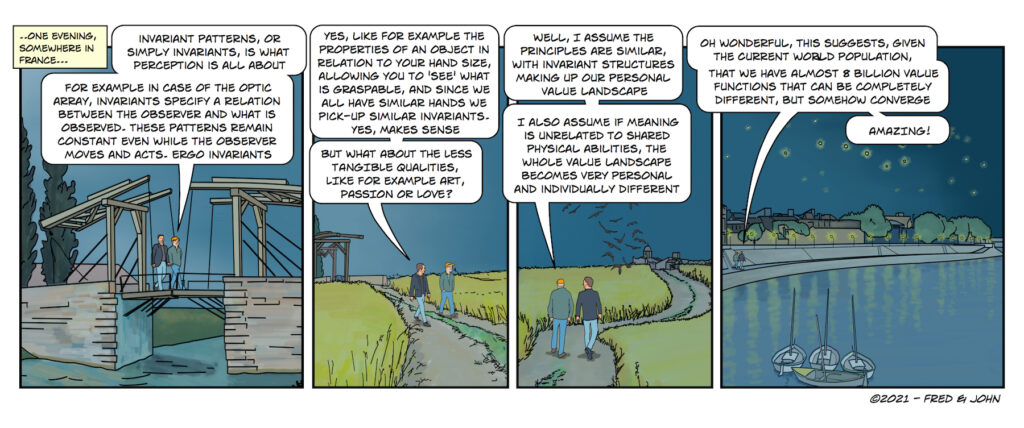
Gibson showed us how optical invariants help to specify the field of safe travel through a cluttered environment - What are the invariants that specify the satisfying path through a social landscape - to help us to discover those worthy of trust and friendship?
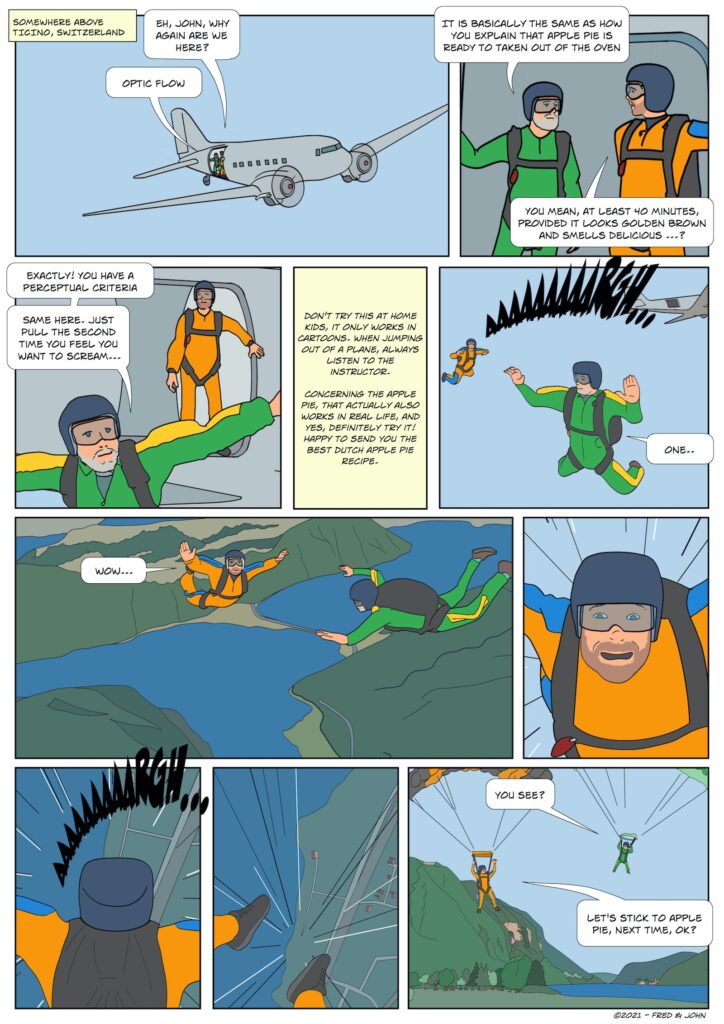
Many designers talk about "affordances" as properties of the technologies that they design - but there is less discussion of the other facet of Gibson's work - which was the idea that affordances can be directly specified by information that is revealed as one acts (e.g., the optical flow patterns that specify an impending collision). The interface representations that we design determine whether the affordances are well specified - and ultimately determine the skill in wielding those affordances.

Gibson described how we use structure in optic flow as information to skillfully navigate through a cluttered environment. These structures exist as a function of the physics of light, surfaces, and motion. For skillfully navigating through a social ecology - we create 'structure' (e.g., calendars) that allows skilled coordination with the people around us. In a digital world, there are no physical constraints - thus, one of the challenges of designers it to introduce constraints that allow people to skillfully realize the affordances that digital technologies offer. Without constraints, skilled coordination is not possible.

Who wins in the new "gig economy?" Is the gig economy new opportunities and new freedoms for workers or is it yet another way for management to exploit workers?
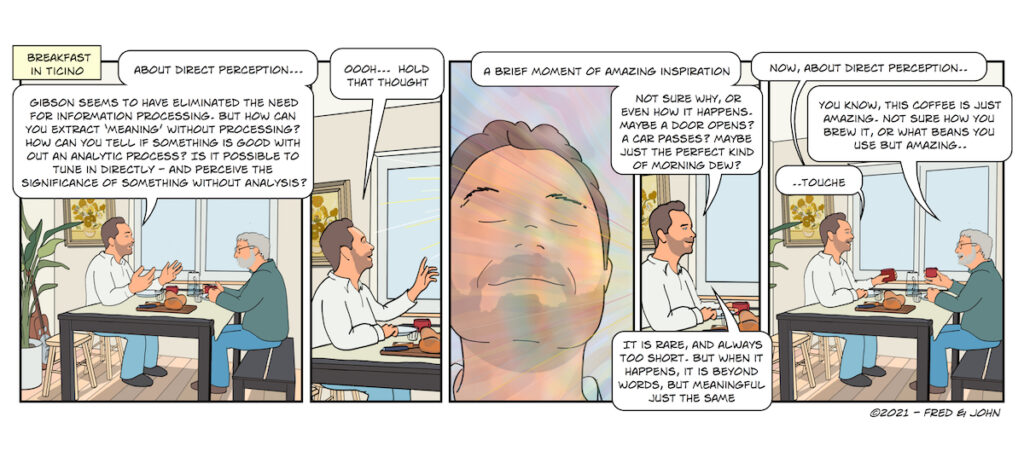
Pirsig's Metophysics of Quality suggest that a quality like "goodness" is the most basic foundation for human experience. This suggests that meaningful properties are basic and that the analysis of that meaning into component dimensions is derivative. This suggests that it is a mistake to think that the dimensions used in the physical sciences describe the "real world." Yes, these dimensions are very useful for science and engineering, but it may be a mistake to think of these dimensions as the building blocks of human experience. Rather, these dimensions are derived from that experience.

In dynamical systems "noise" will typically be structured (colored) and that structure will typically carry important information related to the stability of the dynamic. For example, changes in the noise will often pre-sage phase transitions. The term "noise" suggests that it is an obstacle to analysis and should be filtered out. Better to recognize it as variability that carries information about the dynamic constraints.
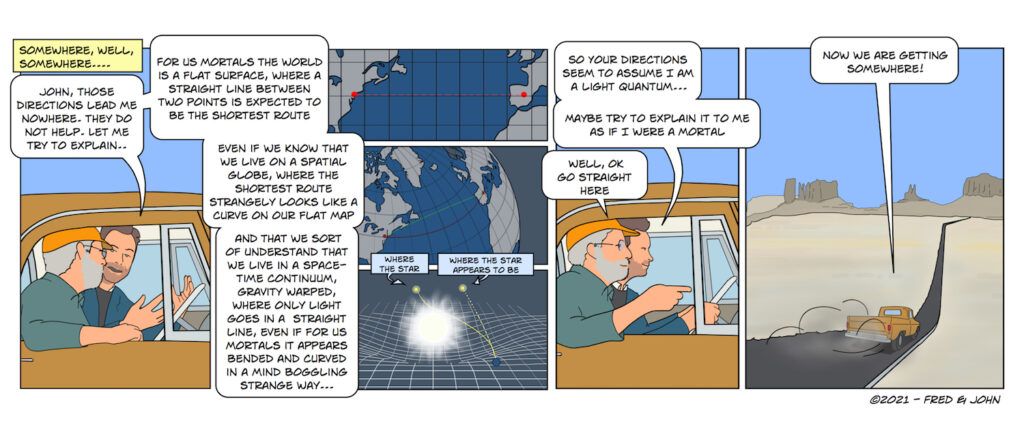
Those of us who have spent a long time in a specific discipline often become engrossed in the subtle theoretical nuances and the historical roots of concepts. We can forget that our partners on a multi-disciplinary design and development team may not be so interested in that level of detail - they just want enough information to get the project further down the road. So, we have to remember that the diversity of interests is a plus - and we should not be disappointed when others don't share our enthusiasm for gaining a deeper understanding of a narrow slice of the world that we find to be fascinating.
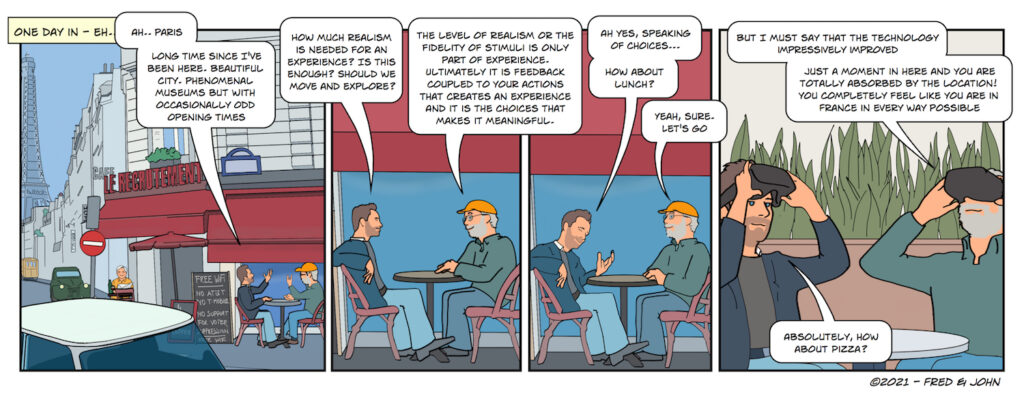
In designing displays it is important to look past the screen to consider the mapping of the representation to the affordances of the domain being represented. The "directness" of perception and manipulation depends on the COUPLING of perception and action - so that people can see and anticipate the consequences of their choices and actions.
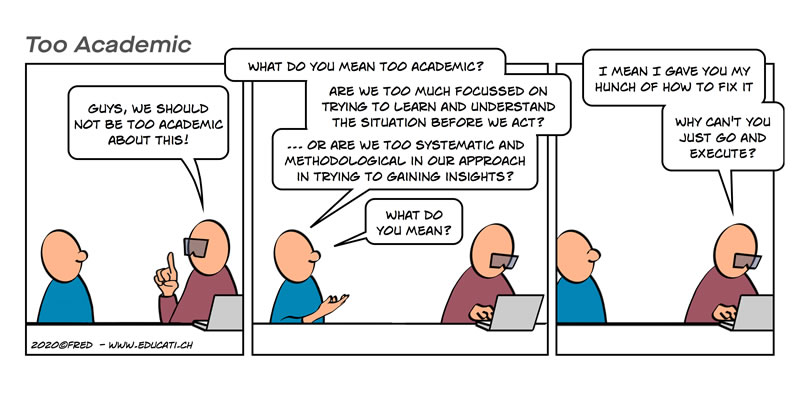

Science is a tour bus for delving into the mysteries of our changing world. The vehicle doesn't change but the views out the windows are continually changing - reflecting a dynamically changing landscape and new perspectives on that landscape. It can be a magical, mind bending exploration that helps us to see beyond the surfaces so that we can connect with the world in an increasingly skillful and intimate way.
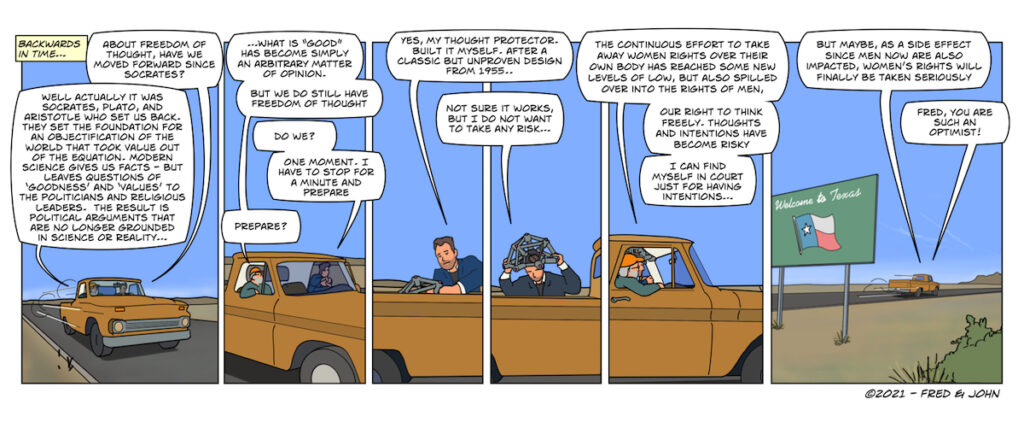
The cold logic and objectification of the world inspired by Plato and Aristotle set the stage for modern science. However, a side effect was the separation of the pursuit of the "truth" from the pursuit of the "good." Science abdicated authority for determining the 'good' in favor of authority for determining the 'truth.' Determining what was good was left to the politicians and the church. Today - this chasm is wider than ever. 'Good' has become a purely subjective opinion - with any opinion being as valid as any other. Our sense of good with respect to women's health, pandemics, and global warming is no longer grounded in reality. Unfortunately, scientific guidance about what would be good is being treated as just another opinion.

Lopes (1986) suggests that signal detection theory is a better model than classical logic or inference for most everyday decisions. Essentially, the action is prescribed by the signals - and the quality of choices often rests on whether the signals are picked-up or missed. This is also the basis for Gary Klein's recognition primed decision making. E. Gibson's (1969) work suggests that expertise in decision making depends on learning to attune to the signals that specify the affordances. Finally, the reason that hindsight is 20/20 is that the signals are generally quite obvious in retrospect.
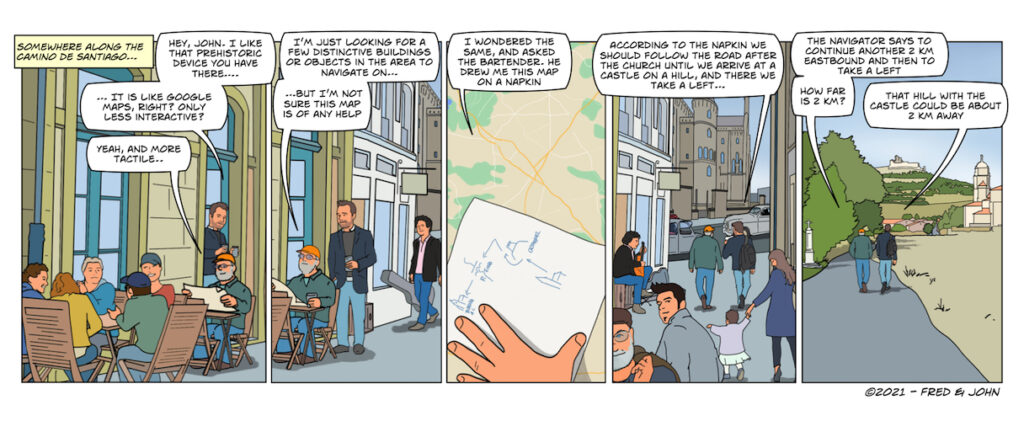
I recently observed soldiers doing land navigation during a competitive training exercise. The teams that were most successful understood that navigation involved more than compass angles and distances. They used the terrain maps to identify key landmarks (e.g., distinctive topography such as ravines and roads) and then they let the landmarks direct them to the targets. Angles and distances are the primitives for geographers - but they are not the only primitives for finding your way in the world. The world is rich with information (e.g., landmarks) and smart people tune to this information to achieve skilled levels of performance.

Thanks to all the people who have shaped who we are and how we see the world!

It is not possible to understand complex cognitive systems from a reductionistic world view. The reductionist view is convenient for generating research papers and building CVs - but it does not lead to insights that will help in the design of more effective joint cognitive systems. Any experimental approach and in fact any form of observation reduces the complex phenomena being observed. So, practically it is impossible to avoid some degree of reduction. However, the problem is a reductionist world view that assumes that the whole can be understood as a sum of the parts. In contrast, a complex world view recognizes the limitations of each perspective and frames the problem in terms of integrating multiple perspectives in order to discover invariant properties of the wholistic dynamic. It is possible to make sense of the parts in the context of a more wholistic view of the dynamic. But it is not possible to discover the wholistic dynamic from a collection of parts.
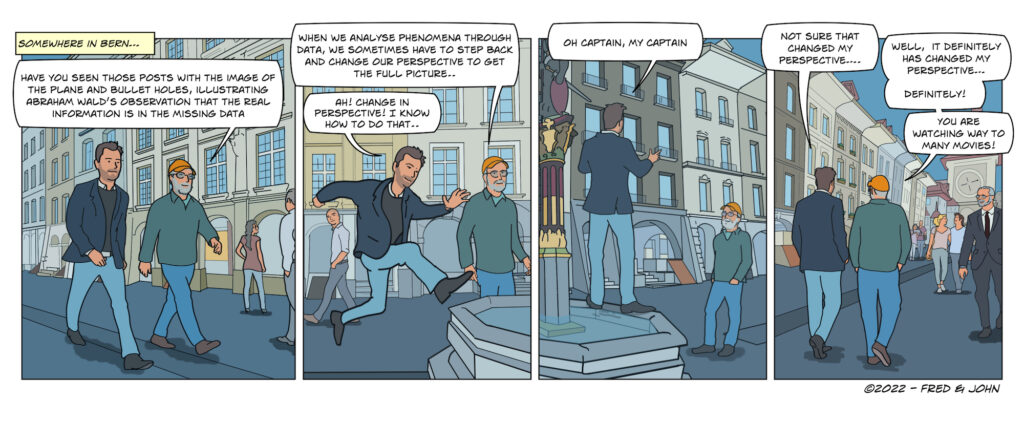
The significance/meaning of data (and missing data) changes depending on your framework or perspective. Every perspective is biased or selective - and the only way to discriminate biases of a framework from invariants of a phenomenon is to vary frameworks/perspectives. Diversity of perspectives is essential to a science of complexity.

Little things count! Even our smallest acts can reverberate in ways that we can't even imagine.
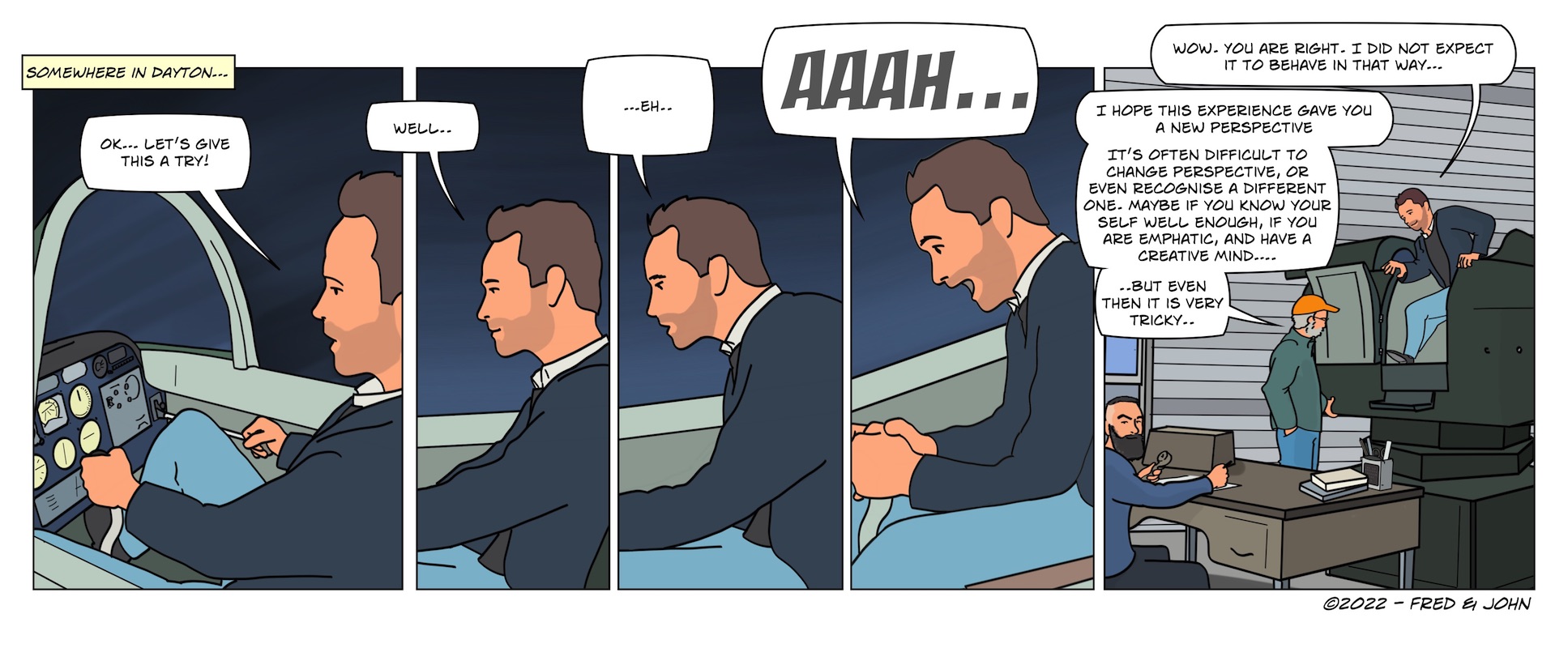
It continues to amaze me that a terrestrial animal can learn to manipulate a throttle, stick and rudders to soar through the sky! The story of the Wright Brothers is a great lesson in creative envisioning of new possibilities.
